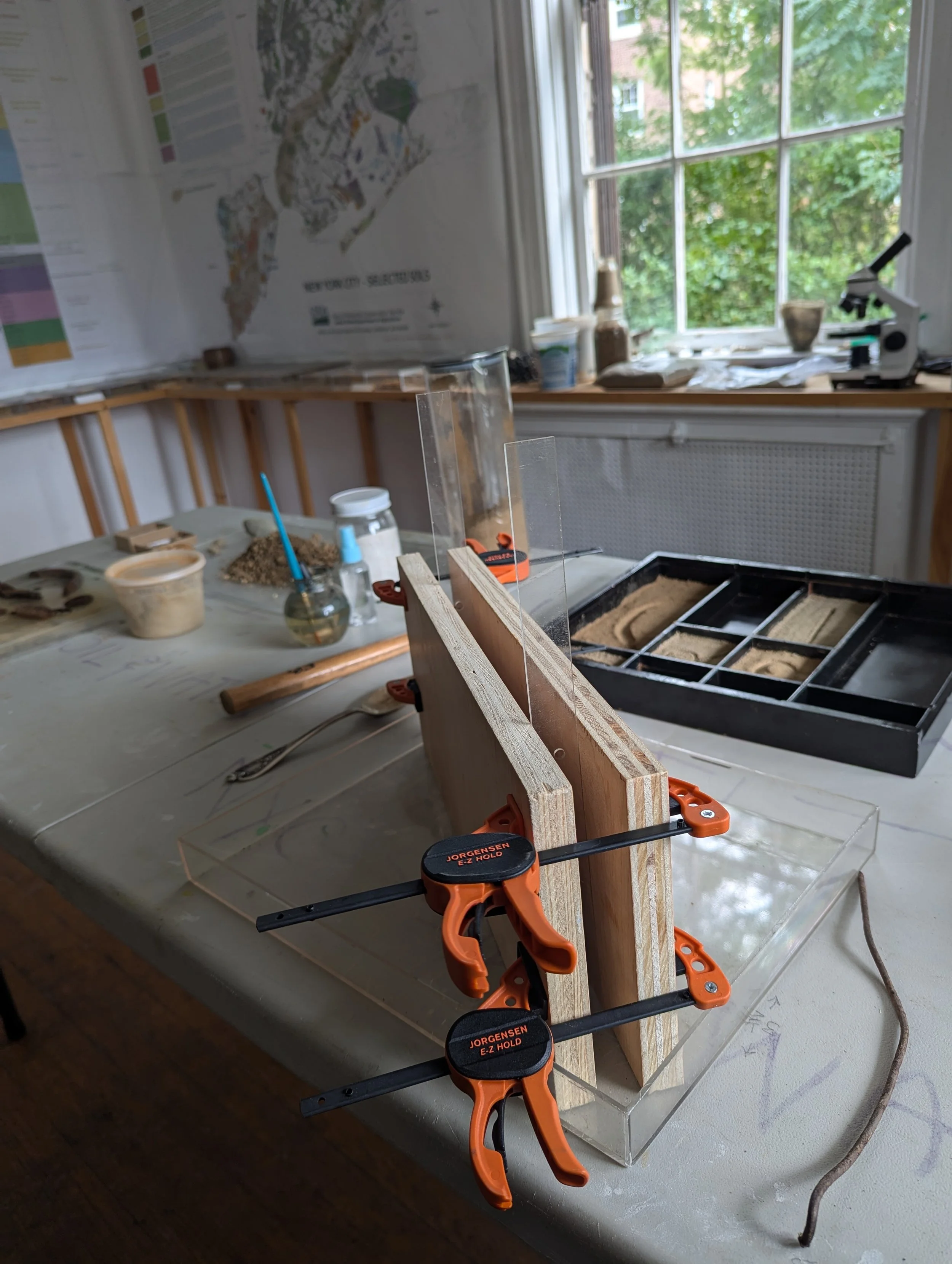At the moment, my research at Swale House, in partnership with the Urban Soils Institute on Governors Island, is oriented toward exploring the interplay between the natural and the fabricated. I'm particularly focused on the geologic and pedologic history of the island. Governors Island is a fascinating case study because the land itself has transformed significantly over time. The island, originally about 69 acres of glacial drift, was later expanded by over 100 acres in 1911 using landfill from the construction of the Lexington Avenue subway line. This created a “made land” rich with human artifacts, debris, and history.
This evolving narrative—of how the land grows, shrinks, and interacts with human intervention—mirrors the way I see the body-landscape dialogue. It's a dynamic relationship, one that I’m excited to continue unraveling. Each part of this research brings insight on how bodies, cities, and history influence and are influenced by each other.
Our bodies are inherently tethered to the ground, and soil operates as an undercurrent—both a support substrate and habitat, as well as infrastructure and structure. This concept has led me to a deeper inquiry into the relationship between the body and urban soil.
The void, especially in the context of imprints and negative space, can be seen as a presence in absence. In working with traces, the void becomes an active participant—it is not emptiness, but a record of what once occupied the space. The negative space holds memory, gesturing toward the unseen forces that shaped it. It reveals the tension between form and empty space, much like how a body shapes the earth by its weight.
Studio Practice: rammed earth on wood forms, found objects imprinted on soil, body imprints, soil & water on crinoline fabric.



















